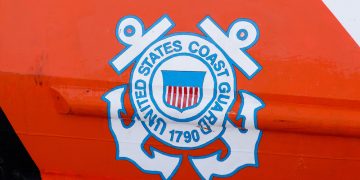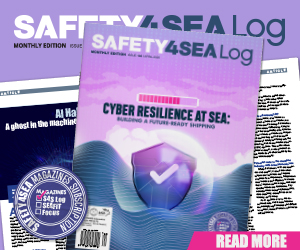According to SOLAS Regulation III/19.3.6, every ship must conduct a rescue drill from an enclosed space at least once every two months. But why is the emphasis placed on rescue from an enclosed space rather than the entry into one?
As per IACS Recommendation 72, more than 50% of deaths in enclosed spaces result from the impulsive actions of crew members attempting to rescue colleagues. In many cases, seafarers instinctively rush into a space upon seeing an unconscious person inside—without taking the necessary precautions or following procedures and training designed to protect them.
The most critical training message concerning rescue from enclosed spaces is this: “There must be no unplanned entry into a space where the atmosphere is unknown and has not been tested.”
A fundamental requirement implemented by shipping companies through the Safety Management System (SMS) is the identification of enclosed spaces on board. These spaces must be clearly marked, and appropriate warnings must be displayed to alert anyone entering about the necessary precautions.
The two stages of enclosed space rescue
Rescuing someone from an enclosed space involves two key stages:
Stage 1: Preparation for Enclosed Space Entry
The SMS outlines the procedures to be followed before entering an enclosed space. At a minimum, the following steps must be carried out:
- Ventilate the space, if possible.
- Measure the atmospheric conditions inside the space.
- Conduct a risk assessment for hazards beyond the atmosphere (e.g., structural risks, chemical spills).
- Obtain a valid permit under the Permit to Work system.
- Brief the rescue team on key details (e.g., atmospheric conditions, obstacles, number of casualties).
- Ensure all equipment is appropriate and functional.
- Confirm that all team members have been properly trained.
- Assess that the team is mentally prepared and not acting under stress or panic.
- Establish and maintain continuous communication with the team.
Although some of these steps may take time, the primary goal is to rescue individuals without creating additional casualties. A well-trained team can execute these steps swiftly, especially if drills have been routinely and effectively conducted, and the crew is familiar with the layout of enclosed spaces onboard.
Stage 2: The Rescue Operation
Once preparation is complete, the team can proceed with the rescue. Two general types of entry may be required:
- Vertical Entry and Evacuation – common in deck areas (e.g., tanks, holds)
- Horizontal Entry and Evacuation – typical in accommodation spaces, engine rooms, and internal compartments
Both scenarios generally require the following rescue equipment:
- Personal Protective Equipment (including breathing apparatus)
- Portable gas detector/atmosphere meter
- Rescue stretcher
- Safety harness
- Guide ropes
- Communication devices
- First aid kit
- Adequate lighting
- For vertical rescues only: lifting/hoisting equipment
The rescue team should enter the space safely and locate the casualty. Even if a casualty is immediately visible, the team must check the entire space for others who may not be in plain sight.
Evacuation should be performed using a stretcher. In vertical rescues, the stretcher must be hoisted using the appropriate winch or lifting system. After the evacuation, the team leader and the standby person must verify that all team members have exited the space safely.
Once removed, casualties must be treated according to standard first aid protocols, including CPR or defibrillation if necessary. All casualties should be transferred to the ship’s medical facility, and arrangements made for evacuation to a shore-based medical center if required.
Key actions for drills
Rescue from an enclosed space as a comprehensive drill involves two critical stages. Stage 1 focuses on the safe entry into the enclosed space, ensuring all procedures, risk assessments, and safety measures are properly followed to prevent additional casualties. Stage 2 involves the actual rescue of the individual(s) from the specific space, requiring the use of trained personnel, appropriate equipment, and effective coordination to safely extract and treat the affected person(s).
The following actions are to be implemented:
- Raise the alarm
- Muster the crew and gather equipment
- Check for crew members’ knowledge for specific duties
- Lifelines, breathing apparatus, resuscitation equipment and other items of rescue equipment are ready for use
- Test the Breathing Apparatus for appropriate functioning and air level
- Ensure appropriate communications between teams
- First aid kit and stretcher to be ready for user
- Check the atmosphere of space for air quality and flammable gases and obtain Master’s permit for entering
- No person is to enter the space without Breathing Apparatus.
- Use a dummy in order to simulate the rescue with or without the use of stretcher
- Simulate first aid provision including resuscitation with the use of applicable equipment or with man to man support.
- Debrief the crew for all stages
- Restore equipment to previous storage position and condition
- Log the drill
From drill to reality
Rescuing a casualty from an enclosed or confined space is a high-risk operation that demands more than routine practice—it requires a seamless transition from drill to real-life execution. Success hinges on thorough training, clear communication, strong teamwork, and the readiness of appropriate equipment.
Above all, unwavering adherence to established safety procedures is non-negotiable—there is no room for shortcuts or improvisation when lives are at stake.
Every action must be intentional, methodical, and fully aligned with the ship’s Safety Management System (SMS) to ensure the rescue is effective without escalating the danger.



































































